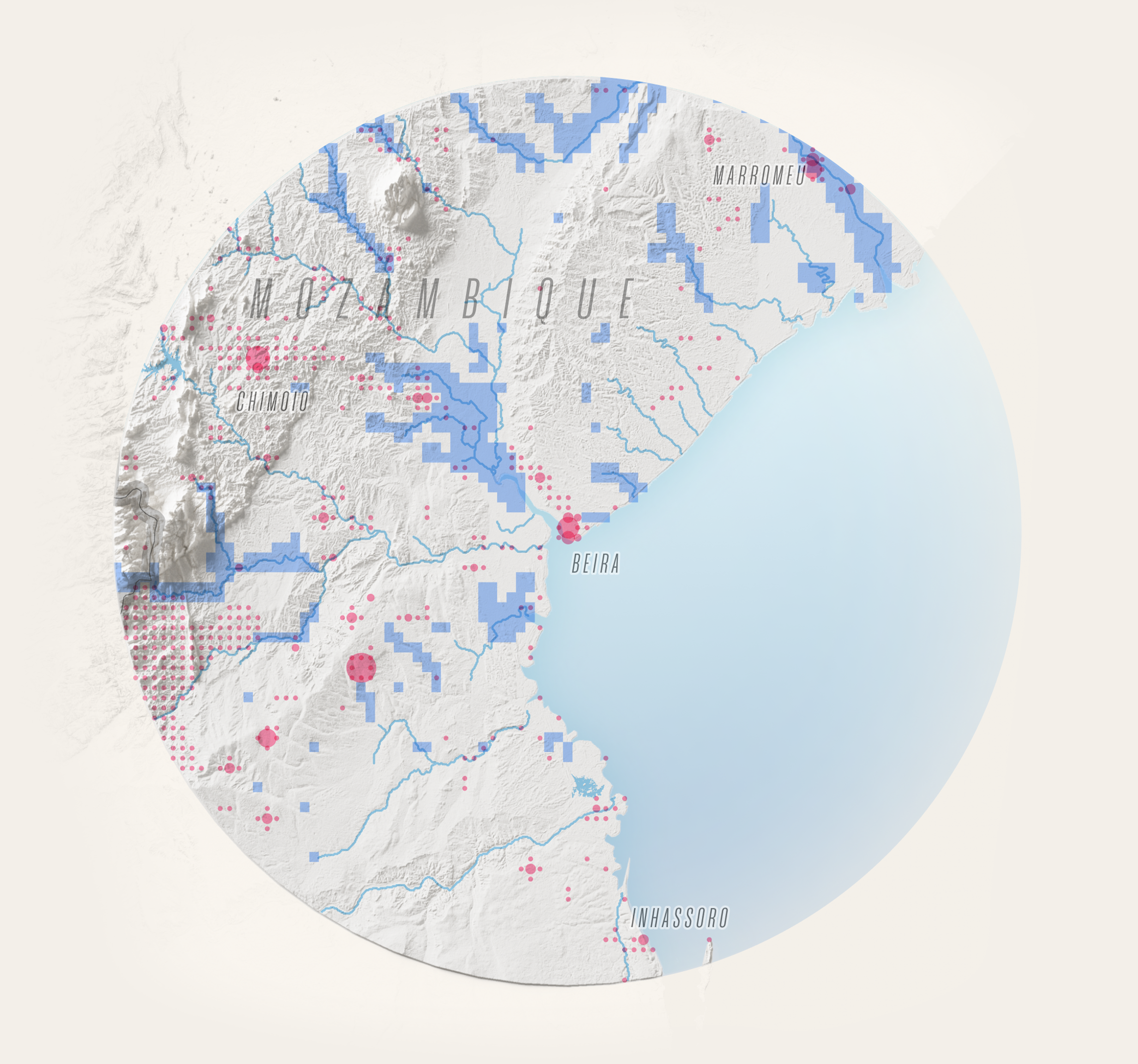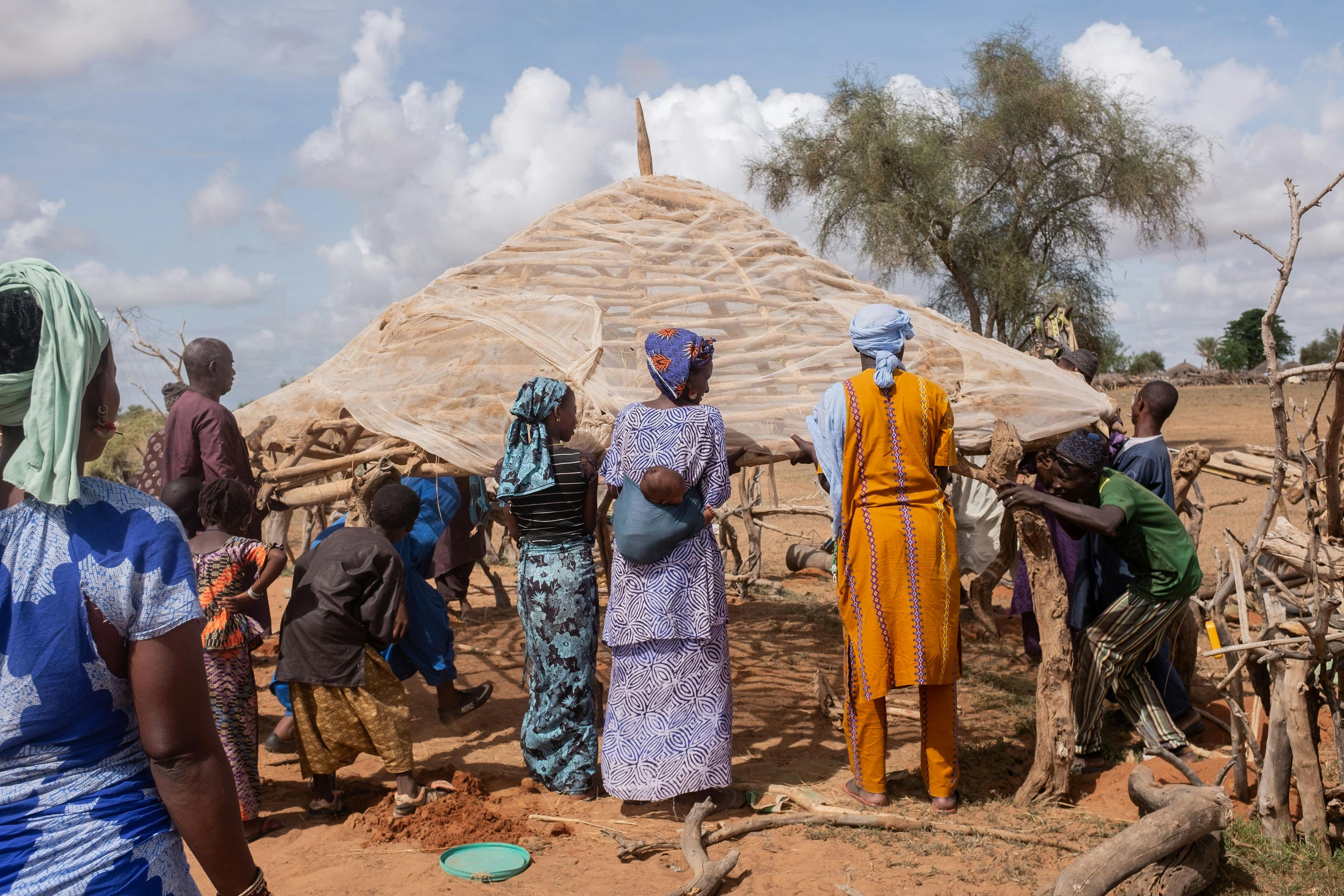Voices from thefrontlines
Climate change is reshaping our world and exposing Africans, across the continent, to increased hardship. How can its people be empowered to face climate shocks and stressors and make informed decisions to move or stay now and in the future?

Stepping into tomorrow • 5.1
HarnessingHope
HarnessingHope
Towards people positive climate action
Introduction
Africans remain optimistic, a source of resilience amidst the climate crisis.
At risk of cyclones and floods, climate adaptation will be crucial for the 483 thousand people who will continue to call Beira home by 2050. The generalized hope for a better future will contribute to the preparedness of those in Beira and cities across Africa.

Keeping the faith: Africans are hopeful for a better future, an important source of resilience
Even though Africans are already weathering climate shocks, many people are optimistic about the future and expect their personal circumstances to improve. A 2019 Afrobarometer survey of 34 African countries found that those who understand climate change as an issue agree that it should be stopped, and many also believe that something can be done about it. Half of the men and 40 percent of the women in affected communities surveyed by the ACMI are confident that their families’ circumstances will improve. This is in spite of them witnessing and experiencing harmful impacts from changing and extreme weather patterns, such as flooding, drought, and storms. Young people and men seem more optimistic than women, suggesting that climate mobility solutions must be gender-sensitive.
Figure 1
Despite the negative outlooks, people throughout the continent feel hopeful about their future.
Question: How do you think your household will be able to provide for its members in the next 5 years? We will likely do...
Percentage of respondents per gender and category
Women
Men
Source: ACMI Survey data, 2022. Based on survey from 6 locations in Africa. Over 100 households surveyed.
Putting people at the core of climate resilient development
As the world confronts the climate crisis and works towards delivering the Sustainable Development Goals, a new consensus is needed. To deliver on existing promises and ensure no one is left behind, adaptation and development efforts must merge to advance common goals and approaches and forge a new paradigm of climate-resilient development.
Africa will be essential to achieve this promise. Africa needs inclusive development to cope with and adapt to increasingly severe climate impacts. Yet, with every increase in global warming, the costs of adaptation will grow, threatening to divert much-needed resources from development investments.
Africa’s natural resources have fuelled growth around the world and will be critical for transitioning to a new, low-carbon future. However, going forward, it is the continent’s people, and their hopes and aspirations, that must be at the centre not only of policy making in Africa but also its relations with the world. Investing in the continent’s human capital will yield the workforce, ideas, innovations, and solutions needed to achieve the green transition and build climate-resilient economies. To be people positive climate-resilient development must have an African fingerprint.
Harnessing mobility ties for climate adaptation
Climate-resilient development that is people positive must honour people’s ‘right to remain’ by protecting, and investing in, the places they call home. To be protective, investments must be risk-informed and anticipatory, considering how actions and impacts in one place might affect another. Climate mobility alters the landscape of connections between people and places and will create increasingly strong rural-urban ties.
Many African households already have members spread out in various locations, not only to mitigate climate and other risks, but also to take advantage of opportunities in different places. By embracing this ‘multilocality’ and the new connections forged between people and places, Africa can fortify its climate resilience, advance its long-held ambitions for political and economic integration, and reap transformative development gains.
Climate mobility on the continent will be predominantly internal, putting adaptation and development actions at the forefront of supporting affected communities and the people who move. Recognising and supporting mobility as a legitimate coping and adaptation strategy will allow communities to remain rooted in place, while pursuing new livelihood and income opportunities.
To support mobility as an adaptive strategy, adaptation actions must be locally anchored, context-specific and informed by community priorities. At the same time, they can create shared benefits and prevent negative side effects across communities and localities. By planning for climate mobility, governments at all levels can prevent maladaptive outcomes.
The Way Forward
Africa can develop adaptation pathways that are people positive, locally anchored, and culturally appropriate.
This process must tap into the aspirations of Africa’s young population, the resilience of its women, and its communities’ local and traditional knowledge. In this way, the continent can leverage its diverse human potential to prepare for the climate crisis and build social cohesion. Many Africans are already taking matters into their own hands by adopting various coping strategies. Few expect help from their governments. However, in the face of more severe climate hazards most household adaptation strategies look unsustainable without support. The international community has an important responsibility towards the continent. It is key that commitments are matched with deeds and engagement is accelerated to support affected communities. From better climate information services to flexible social protection measures, affected people and communities must be included in efforts to craft solutions, so that these will fit their specific needs and local contexts.
